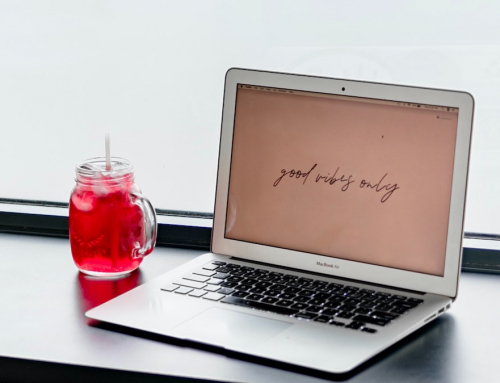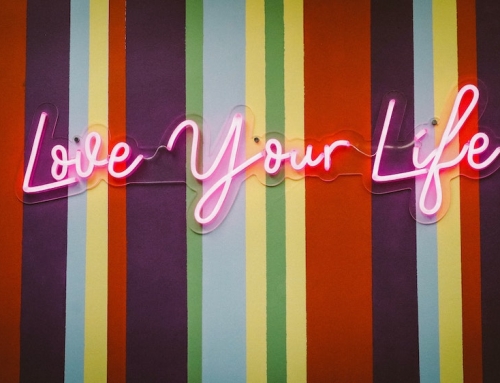Do you have those days that you wake up and think “I need to change my life!” We know this feeling, we have had it for a while when we still worked at our 9-5 jobs back in Amsterdam. To change your life, you need to start small.
In this post we explain the power of habits, and how you can use them to achieve positive changes in your life.
You might also be interested in changing your life through a sabbatical, read our guide:
- Ultimate Guide For Taking A Sabbatical
- Happy Life – 10 Minutes Exercise For Millennials
- Creating a Vision Board for 2020 – Mistakes to Avoid
Save this post to your Self-development board on Pinterest!

Change my life one habit at a time
You, me, and everyone else have one thing in common: we all have habits.
Our lives are formed by our habits, which are part of our daily routine, and to a large extent, they define who we are.
Consequently, if we wish to make certain changes to ourselves or our life, we need to pay attention to our habits.
Last week we went through an exercise that maps out your current daily routine and reveals the activities that you should eliminate and the ones you could do more of.
Indubitably, there are good and bad habits, and we all have plenty of both to showcase.
Typically, we tend to focus on the bad habits, which include behaviors such as nail biting or spending countless hours on social media. The mere fact that we have bad habits suggests that we are not in full control of the habits we posses. No one in their right mind will consciously develop a habit they and others believe to be bad.
Knowing this, it just begs the question: what can we do to eliminate bad habits and cultivate more good habits?
Here is the BIG secret, we can design and implement specific habits that can result in big changes to our life.
Dream big but start small. Drastic changes happen gradually and then suddenly.
What are habits?
According to Meriam Webster Dictionary, a habit is “an acquired mode of behavior that has become nearly or completely involuntary”. Following this definition, habits are things that we assimilate over time and end up doing unintentionally and unconsciously.
While this definition describes how habits manifest in our daily lives, it does not explain how habits are formed in the first place?
Fortunately, there are plenty of scientific researchers that found this topic interesting and can now explain how habits work. By understanding the science behind how habits are formed you will realize why you posses certain behaviors and be able to design your desired routine, which is essential to a happy everyday life.
How are habits formed?
There are various theories that try to explain why we do what we do. Charles Duhigg’s provides a straight forward theory that we would like to focus on. In his best selling book, The Power of Habit, Duhigg explains that habits can be broken down into a 3-step habit loop: a cue, a routine, and a reward.
The cue is the trigger for a habit to occur, which Duhigg defines in 5 categories: location, time, emotional state, other people, and the preceding action. The routine is the actual behavior or action you take as part of the habit. Lastly, the reward is the satisfaction you get out of completing the routine.
Now this is important, cue, routine, and reward are the 3 ingredients you need to design a desired habit and slash a bad one.
Let us walk you through how you can use this knowledge to slash bad habits and develop good habits in order to make the changes you want and live a happier life.
Change my life by eliminating bad habits
The Power of Habit in Practice – Eliminating Bad Habits
- Choose a habit
Start by choosing a habit you consider to be bad. You may use the exercise in our previous article to find out which activity gives you the lowest level of positive energy in your routine. Take for instance the habit of spending too much time on social media.
- Identify the cue
Identify the cue that triggers the habit. In our example, the cue might be a combination of location and time: sitting in the living room after dinner and trying to relax.
- Define the routine of the habit
These are the actual actions and activities you undertake as part of the habit. In our case, it is grabbing your phone or tablet, opening your social media app, and scrolling through newsfeeds and stories.
- Recognize the reward of the habit
Without a reward, you wont repeat the behavior and it won’t be a habit. In our example, the reward might be entrainment or inspiration that you receive from scrolling through your feed.
- Eliminate any of the 3 habit ingredients
Here comes the key for giving up habits we no longer intend to follow. By replacing any of the above 3 ingredients, you will break the habit. In this example, you may replace the actual routine with something else, and keep the cue and reward the same. You may for instance read a book or a magazine instead of going on social media, which will be triggered by the same cue and will have similar rewards of entertainment and inspiration.
Change my life with good habits
Steps 1 to 4 above may also be used for forming new habits in your life. After figuring out which new positive habit you want to implement in your daily routine, you can identify cues, define the routine and how the habit will take place, and lastly establish the reward you will get from completing this habit. It helps to consciously define a reward in order to make a new habit stick.
Let us run through an example.
- Assume you want to save money in order to go on a long world-trip. Firstly, identify a cue for the habit. We may use receiving your salary as the cue and the trigger for the habit. The first few times, you might need to train yourself to check your bank account when your salary arrives. Perhaps you can set a calendar reminder as an additional cue.
- Secondly, we’ll need to identify the routine. For this example, the routine will be transferring a portion of your money from your current account to your world trip savings account.
- Finally, the last step is to set a reward for the habit. In our example the reward might be that your are getting closer to going on your world trip. You can make this reward more appealing by making a visual progress tracking display towards your goal, either physically or digitally.
Track your progress to make new habits stick
It is useful to use some tracking tools to implement and maintain a new habit. Setting goals for yourself and tracking your progress in keeping up with a new habit will help the habit stick. The goals do not have to be the resulting change you expect, as that might take a very long time.
A goal can also be to complete the habit every day for the first month or 3 times a week. This will push you to continue the habit, before it becomes an unconscious behaviour. No one likes to quit after a 28-days streak when the goal is 30 days in a row. Moreover, looking back at your achievements will push you to want more.
Tracking tools range from old fashioned journal or physical calendar to digital apps. You could mark down the days on a printed calendar that is hanging somewhere visible so you can see your progress at all times. Digital tools include apps and desktop plugins. For instance, following our social media habit above, majority of social media platform have an integrated tool to limit your time on the app. This is a good way to eliminate the habit.
Best apps for tracking habits
- Momentum Habit Tracker – This app is available for desktop, phone, and iWatch. The free version allows you track up to 3 habits.
- Productive – This app is available for phone and iWatch. You can set up reminders (cues) for your habits and it offers a nice overview of your track record.
- Habitica – This app lets your “gamify your life” by adding a playful aspect to the habits you choose to track.
The interesting part of using tracking tools is that they might become the cue and the reward for the habit. You can use them to trigger the habit, and keeping a good track record can be a reward.
Start building habits to design your best life
To achieve our desired lifestyle we need to take small incremental steps that will lead us to our goals and dreams. Consciously implementing habits into our daily lives helps us achieve the necessary changes that need to be made. It is easier to start small than to try to conquer the big life change immediately. Set yourself checkpoints or milestones on the way up the mountain. Don’t try to think how to climb the entire mountain from scratch. By taking small steps in the right direction, you will get to where you want to be with the quickest pace.
Useful books about how habits can be used to change your life for the better
- The Power of Habit: Why We Do What We Do in Life and Business by Charles Duhigg
- Atomic Habits: An Easy & Proven Way to Build Good Habits & Break Bad Ones by James Clear
- The Compound Effect by Darren Hardy
***
Do you feel like this article is speaking to you? Share your story by taking a short questionnaire at generationnomads.com/survey or write us a comment below. We are currently working on our first book (a big deal for us!) and we would love to have you in it!








Leave a Reply